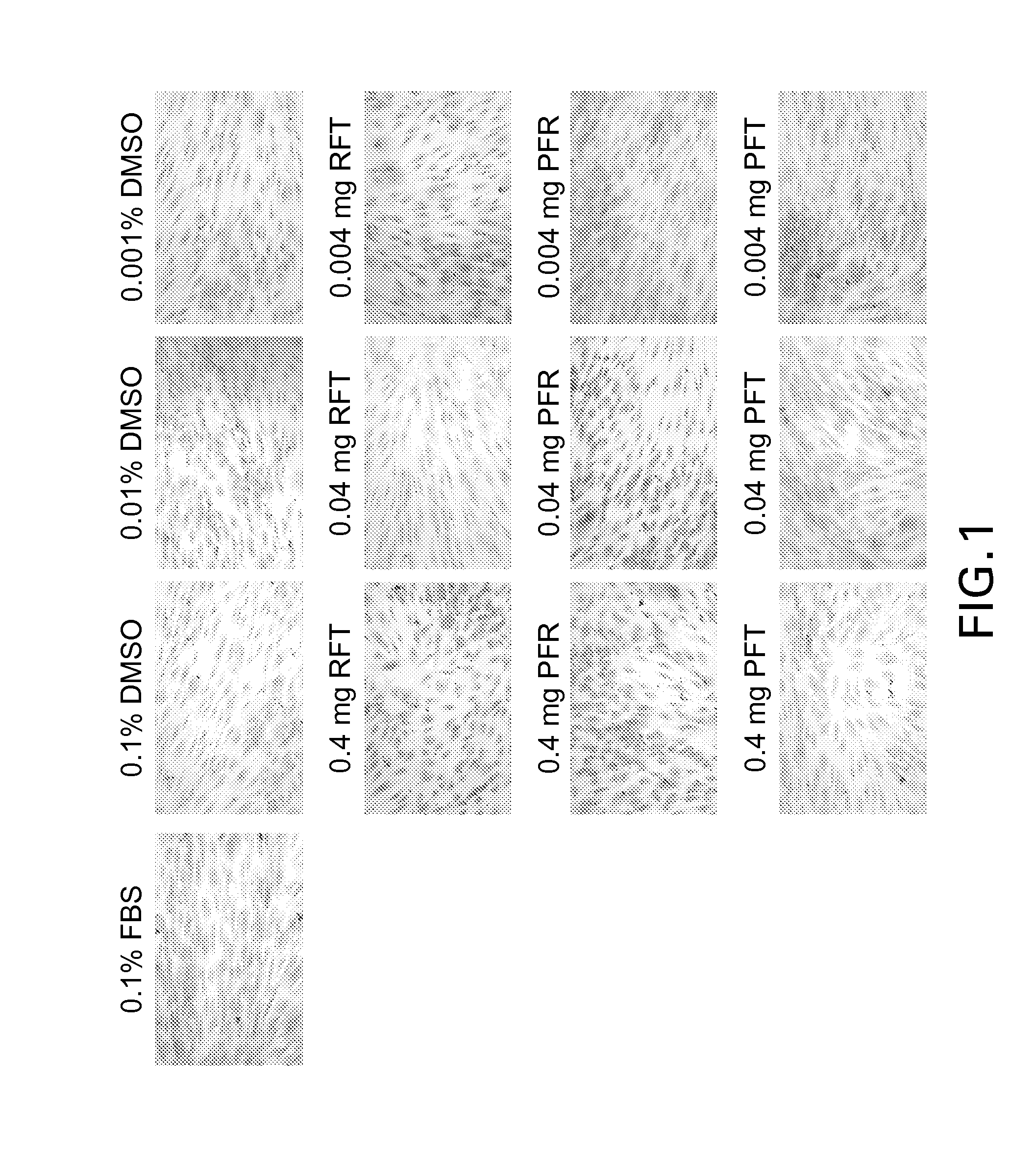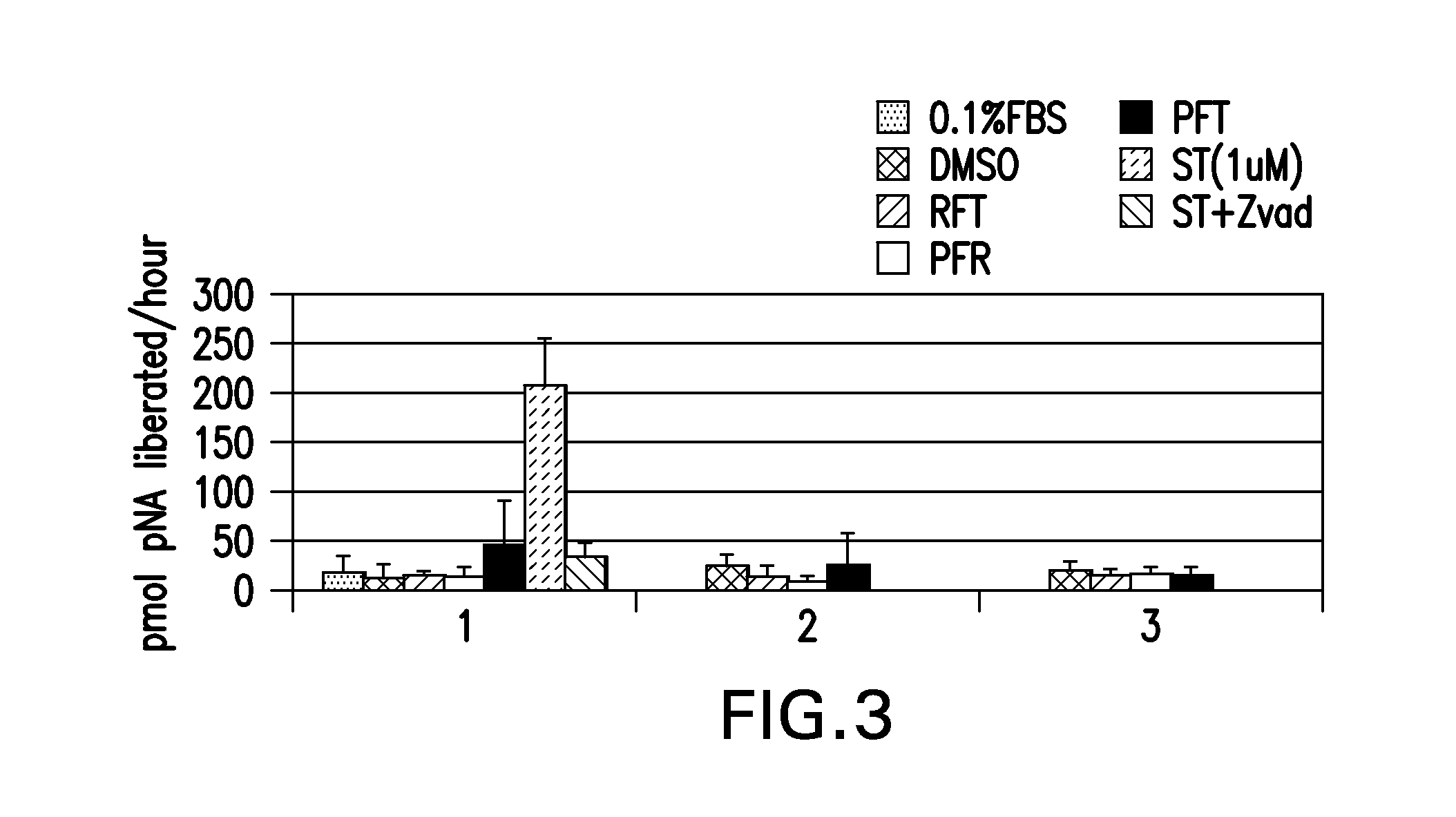Antioxidant compositions for soft oral tissue and methods of formulation and use thereof
a technology of antioxidant compositions and oral tissues, applied in the direction of drug compositions, antinoxious agents, biocides, etc., can solve the problems of oxidative damage to organisms oxidative damage to the body, etc., to promote oral health, enhance wound healing, and reduce salivary reduced glutathione levels
- Summary
- Abstract
- Description
- Claims
- Application Information
AI Technical Summary
Benefits of technology
Problems solved by technology
Method used
Image
Examples
example 1
Effects of Antioxidant Compositions on Gingival Fibroblasts and Periodontal Ligament Cells and on Nicotine-Exposed Cells
[0109]Three different combinations of three antioxidants were applied to gingival fibroblasts to determine the effects of these compositions on human gingival fibroblast (HGF) proliferation and migration and also to detect any toxic effects these compositions may have on gingival fibroblasts. Effects on human periodontal ligament cells (HPDL) were also studied.
[0110]Compositions were prepared as 40% w / v (total antioxidants) solutions in DMSO (e.g. a total of 400 mg antioxidants in 1 mL total volume) (1.6×10−3 M). Compositions were diluted with DMSO to achieve the lower concentrations of 4% w / v (1.6×10−4 M) and 0.4% w / v (1.6×10−5 M).
[0111]Phloretin was 98.6% pure, molecular weight 274 (Kaden Biochemcials, Hamburg, Germany). In compositions containing phloretin, it was present at a concentration of between 4.9×10−3 M (for the 40% w / v composition) and 4.9×10−5 M (for ...
example 2
Effects of Antioxidants on Peroxide and Ethanol-Exposed Cells General Techniques
[0128]Human gingival tissues from healthy nonsmokers were collected with institutional review board approval and tissues were cultured in high glucose Dulbecco's modified eagles medium (DMEM), 10% FBS, and 1% antimycotic / antiobiotic. Tissues were incubated at 37° C. in a humidified gas mixture (5% CO2 and 95% air) and medium was changed every 24 hours. Human gingival fibroblasts (HGF) grew from the tissue after a week. Cells were passaged using 0.25% trypsin solutions and plated in new tissue culture flasks when confluent. Passages 3-12 were used in all of the experiments.
[0129]Human periodontal ligament fibroblasts (HPDL) isolated from freshly extracted human teeth were also used in relevant experiments. Culture conditions as described in HGF were similarly employed in the HPDL cells. In this experiment, 5×103 cells in 100 μL of culture medium were seeded into each well of a 96-well plate. After achievi...
example 3
Mode of Action for Cell Movement
Cell Culture
[0147]Both cell types tested (HGF and HPDL) were plated at 5×104 cells / well in a Lab-Tek II chamber glass slide with cover (Nalge Nunc International, Rochester, N.Y.). Approximately 400 μl of cell medium suspension was added to each well. The cells were grown overnight until confluent. Cells were pretreated with nicotine (10 mM, 8 mM and 6 mM) for two hours and then treated with antioxidants (resveratrol, trans=ferulic acid, tetrahydrocurcuminoids CG™, or phloretin) in double or triple combinations at 0.4% w / v (10−5M). Two hours later, a scratch wound assay was performed using a sterile 10 μl pipet tip. Cells were observed for 10 hours prior to immunohistochemical analysis for Rac-GTP.
Immunofluorescence and Rac-GTP Quantification
[0148]The cells were fixed with 4% paraformaldehyde for 30 minutes and then washed with sterile phosphate buffered saline (PBS) three times. The cells were blocked with 10% normal goat serum (NGS) for 1 hour at 4° ...
PUM
| Property | Measurement | Unit |
|---|---|---|
| w/w | aaaaa | aaaaa |
| pH | aaaaa | aaaaa |
| pH | aaaaa | aaaaa |
Abstract
Description
Claims
Application Information
 Login to View More
Login to View More - R&D
- Intellectual Property
- Life Sciences
- Materials
- Tech Scout
- Unparalleled Data Quality
- Higher Quality Content
- 60% Fewer Hallucinations
Browse by: Latest US Patents, China's latest patents, Technical Efficacy Thesaurus, Application Domain, Technology Topic, Popular Technical Reports.
© 2025 PatSnap. All rights reserved.Legal|Privacy policy|Modern Slavery Act Transparency Statement|Sitemap|About US| Contact US: help@patsnap.com



